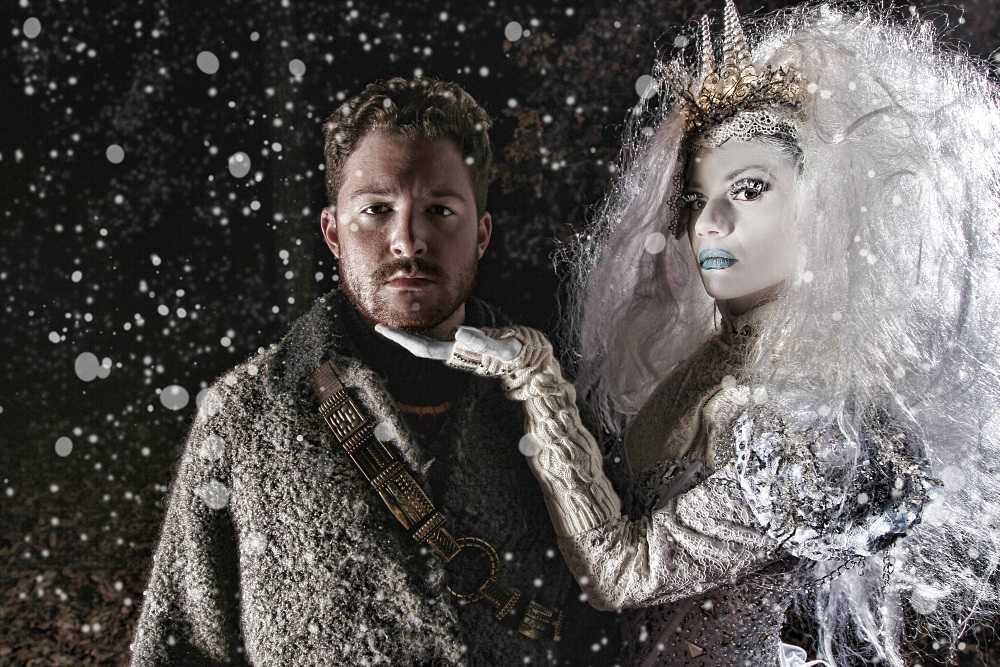PALMETTO, GA.: When a little Disney movie called Frozen premiered last year, children and adults of all ages were cast under the icy spell of the film’s main heroine, Queen Elsa, who had the power to create ice and snow at her fingertips. The movie was loosely inspired by Hans Christian Andersen’s classic story The Snow Queen, and now Serenbe Playhouse in Georgia is taking advantage of Frozen mania to bring fans back to the original story. This month, the theatre premieres Rachel Teagle’s new adaptation, playing through Dec. 23.
“When I saw Frozen, it was like an out-of-body experience,” says Brian Clowdus, Serenbe Playhouse’s executive artistic director and founder—and self-professed Frozen fan. “I would be babysitting my niece and nephews and say, ‘Let’s go see Frozen.’ I ended up seeing it in theatres nine times.”
Clowdus fully admits the movie had a large part in making The Snow Queen happen at his theatre. One of the company’s playwrights-in-residence initially suggested doing the show during the summer, but to do it outdoors in the Georgia heat was just didn’t seem right.
When consideration of the winter holiday slot came up, though, the story seemed like the perfect fit—and the Georgia cold didn’t prevent the artistic team from mounting The Snow Queen outdoors, as is Serenbe’s wont. But, like the makers of Frozen, Serenbe’s creative team set out to give the story their own spin.
“For this design, I wanted to offer a different vision of The Snow Queen than had been previously seen in the more popular adaptations,” says costume designer Erik Teague over e-mail. “In the early stages, Brian and I talked about the show as a ‘high-fashion storybook’ wherein we had a world populated by heightened, runway fashion—inspired looks that were a major departure from any other version of the story. For the Snow Queen herself, I found inspiration in the complex patterns found in magnified images of snow, ice and broken glass. It was important to me to illustrate her as a fearsome, otherworldly creature who is strange and yet beautifully regal.”
To create a gown of ice, fabrics and embellishments including dimensional lace, sequins and rhinestones were used to provide several hard, reflective surfaces, and softer textures—organza ruffles, for instance—added volume. The end results evokes shattered mirrors, ice-encrusted winter branches and snow, Teague explains.

The Snow Queen is billed as a children’s show, but Clowdus says he uses that term very loosely, since playwright Rachel Teagle has also kept adult audiences in mind with her adaptation. Teagle’s rewrite takes the fairy-tale version and incorporates what has become known as “Pixar humor”—i.e., jokes that kids understand in one way and adults in another.
Additional changes—focusing more on the importance of relationships, even on filling in the backstory of the Snow Queen—strive to give the fairy tale an added emotional dimension.
“The original story was long and very nonlinear, and we wanted it to have more of a narrative,” Clowdus says. “We wanted it to have a moral, a happy ending and to see why the Snow Queen is alone. We also focus more on Kai and Gerda and their sibling relationship.”
At the show’s recent opening, Clowdus says he could see that the audience loved it despite the 40-degree weather: There was laughter in the right places, the touching moments resonated and the digital effects were a hit. The show has almost completely sold out its entire run and has already added performances. But for Clowdus and the other creators, The Snow Queen is about more than creating a high-demand holiday show.
“I want people to see that classic literature can be reinvented, and be reinvented for younger audiences,” he says. It may be “a feel-good holiday show,” he adds,” but “people should leave questioning what is important in life, like the relationships we have.”


